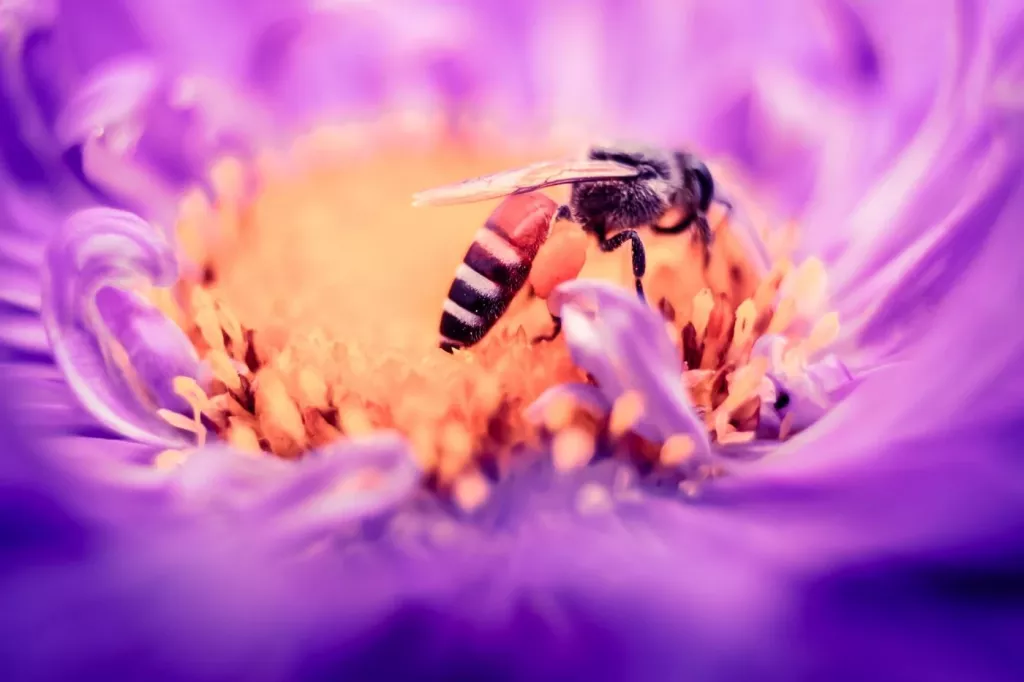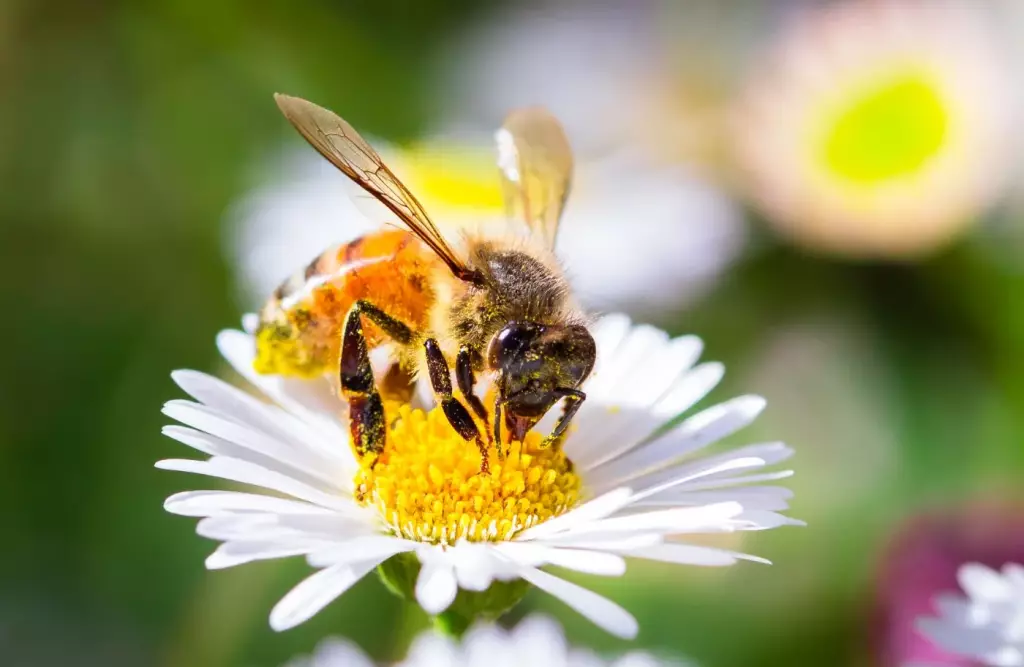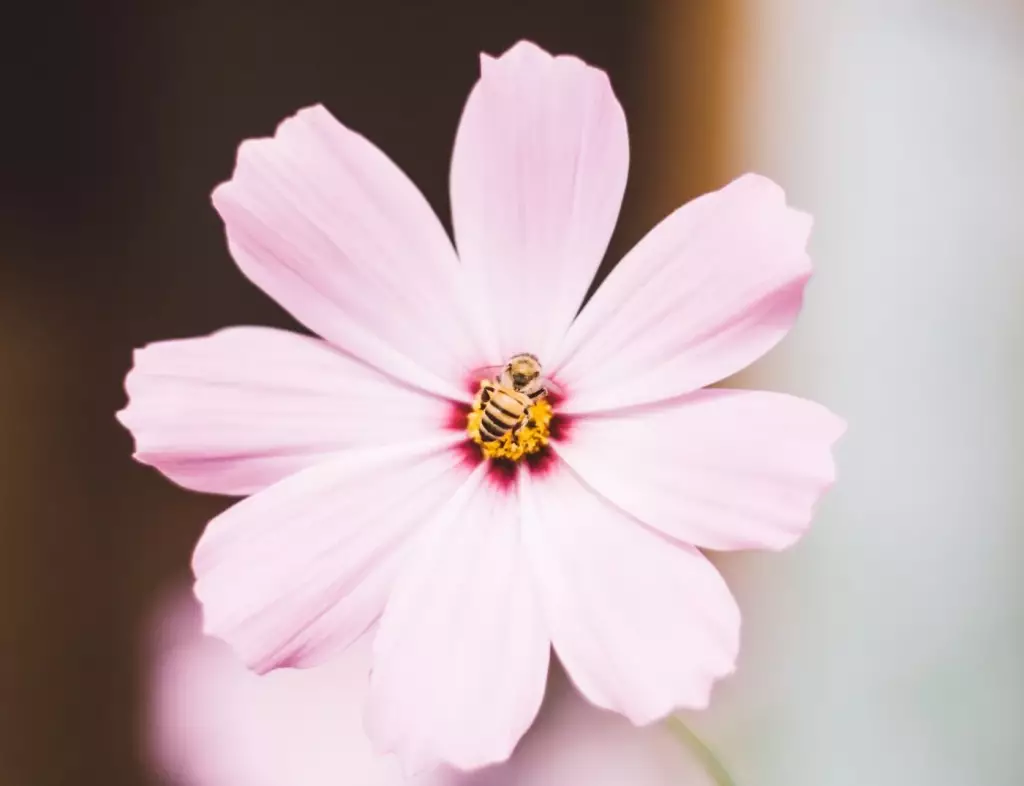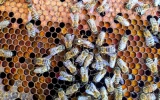What Colors Can Bees See? (Yellow, White, Red, Black)
Humans are attracted to flowers because of how colorful and fragrant they can be. Bees are just like that too, except that they see flower colors way beyond what can be perceived by the human eye. So, what colors in the spectrum can bees see? Let's find out.
Bees can see colors in shades of yellow, green, blue, and ultraviolet light. They cannot, however, see shades of red and cannot distinguish between red and black. Bees can see white the same way humans do.
Although bees can't see red, they can perceive ultraviolet light, which makes their vision more intense than humans'. Ultraviolet marks are evident in many flowers, and these serve as nectar cues for bees but are invisible to the human eye. Get to see the world through the eyes of the bees as we further discuss the details of how they perceive colors below.
Summary
- Bees can see colors in shades of yellow, green, blue, and ultraviolet light.
- Bees cannot see shades of red.
- Bees are able to distinguish between black and white.

On this page:
The Colors That Bees Can See
When light hits an object, some light is absorbed and some is reflected. The reflected portion is what we see as the "color" of an object as encoded by the photoreceptors within the eye, which are connected to the brain. Humans can see more colors than bees, but bees have a wider range of color vision because they can see ultraviolet light.
Bees and the human eye are both trichromatic. They both have three groups of photoreceptors in their eyes, which encode the reflected light that the brain translates into color. Humans and bees base their color combinations on three sets of colors.
Humans base their color combinations on red, blue, and green, so they can see all colors that are of these shades and mixtures. Bees, on the other hand, combine green, blue, and ultraviolet light. They don't have a photoreceptor for red, so they are not able to see red and anything that comes close to the red color is only perceived by bees as dark colors or black. Bees can see yellow color too, and sometimes, orange.
Based on the electromagnetic spectrum, humans can see between wavelengths of approximately 390 to 750 nanometers, which is the visible light spectrum. The rainbow's colors, from red to violet, fall into this range.
Bees, on the other hand, see wavelengths ranging from approximately 300 to 650 nanometers, and this allows them to see way beyond the visible light spectrum as they can perceive ultraviolet light up to yellow and orange colors. They are, however, shortsighted when it comes to the color red.

For the colors black and white, a study has shown that if ultraviolet is excluded, bees can distinguish between black, gray, and white. Our current knowledge proves to us that bees can indeed recognize black-and-white colors. Beekeepers wear a white suit when coming near hives, as white is a non-threatening color for bees. Black, however, is deemed threatening for bees since they have associated dark colors with enemies that hijack their colonies.
The Anatomy of Bees' Eyes and How They See Colors
When you see bees up close, you'd think they just have two large eyes that they use for vision. However, looking through a microscope, scientists have been able to identify that bees have 3 more smaller eyes aside from their compound eyes.
Each compound eye of a bee is composed of thousands of tiny lenses called "facets." Every single facet is connected to its tiny tube, which has a total of eight cells. Each of these cells responds to different lights; four are for yellow-green light, two are for blue light, and one is for ultraviolet light.
In comparison to compound eyes with many lenses, the three smaller eyes of bees, called "ocelli," are each comprised of a single lens. The ocelli help bees detect ultraviolet colors in flowers, aside from stabilizing them in their movement and flight.
In general, all the lenses in the bees' eyes are important for their vision and are responsible for how they see light and colors.
How Important Are Colors to Bees?
As much as flowers are important to bees, so are their vision and ability to identify the colors of these flowers. Identifying colors allows bees to easily detect flowers with a rich amount of pollen and nectar, which are necessary for the honey-making process as well as the process of pollination. Both processes are essential to keep a balanced ecosystem.
If bees have poor vision and no ability to tell colors apart, the process of pollination may be slowed down or may not even proceed. Without the process of pollination, we won't have sufficient crops being produced worldwide.
If bees couldn't make honey because they couldn't get nectar from flowers, bee colonies would perish and there would be no bees to pollinate flowers. It's going to be a cycle of disrupted ecosystem balance, and as little as it seems, the bee's ability to distinguish color is that important.
How Ultraviolet Marks in Flowers Attract Bees

It takes two million flower visits to make one pound of honey. To optimize flower visits by bees, they use their so-called "superhero" vision. Much like superhero vision works, bees can see which flowers they will visit even at a fast speed. Surprisingly, flowers help bees too by reflecting ultraviolet light, which, as discussed above, is one of the three colors that bees can see.
Several flowers have ultraviolet markings on them that help bees gather nectar. It's basically a drawn "landing zone" like in airport runways where bees can tap in and work their way to get nectar. This phenomenon is seen in the case of poppies. Although they are red and bees can't see them, poppies have ultraviolet patterns all over them, which attract bees intensely.
Regardless of their color, we can conclude from here that bees are attracted to the ultraviolet light reflected by flowers, more than the colors of the flowers. This ability to perceive ultraviolet light makes it easier for bees to identify nectar-rich blooms for more efficient pollination and honey-making processes.
